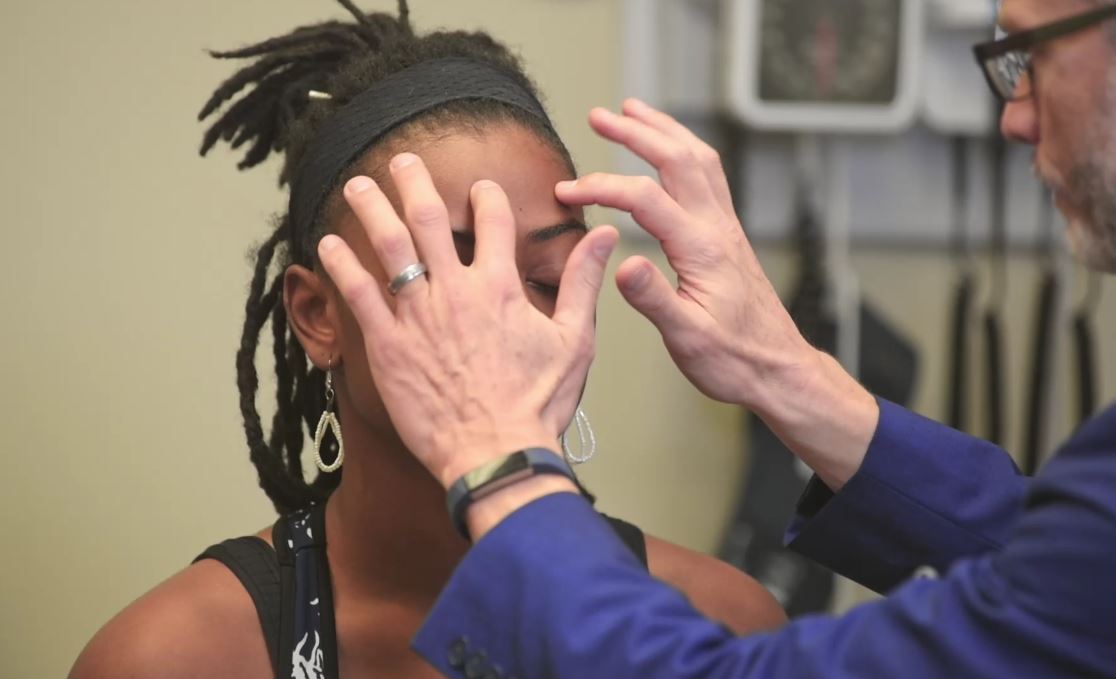Playlist
Show Playlist
Hide Playlist
Lymph Nodes in Neck
00:00 Okay. Now we’ll just move up a little bit from the neck, to the lymph nodes back to submental area. 00:09 So the lymph nodes in the neck. Of course I’m sure all of you know about the lymph nodes. How are they classified in terms of levels? For example, if you are given a case scenario with a patient with squamous cell carcinoma somewhere in the head and neck region,larynx, pharynx, even the soft tissue, and they are going for lymph node dissection and it says level IV lymph node dissection. What does level IV mean? If we talk about branches, basically you got your sentinel at level I. 00:49 So which is level I? Sentinel. Is that the first one, I think? No, for example, if you’re asked to do a lymph node biopsy from this side, from here in the jugular chain, which lymph node will that be? What level is it? You have the hyoid bone here, anything above that is called level I. So from the base of your skull above the hyoid bone is level I, and level I is divided into level IA submental region, level IB in the submandibular gland. Level I, above the hyoid. 01:29 Then you take your hyoid bone which is C3 level and then your cricoid cartilage which is C6 level. So that’s another landmark. You have your jugular vein here, right? Your jugular vein. So your level II, III and IV are upper jugular, middle jugular and lower jugular. So it pretty much corresponds to between your hyoid and thyroid cartilage, thyroid and cricoid, cricoid and the sternum. Got that? You don’t have to be precise but you need to know II, III and IV. Posterior triangle is level V. 02:26 In the midline, you have the pretracheal or the paratracheal lymph nodes, which is level VI. And then if you go into the sternum, below the suprasternal notch, that is level VII. 02:39 So, if you are, if somebody has got a head and neck cancer and they’re doing level V lymph node dissection, that means they are removing all the lymph nodes from here submental, submandibular, from the internal jugular chain and from the posterior triangle. So normally we do level V neck dissection. Level VI is quite advanced cancer where you have to remove all the five plus the paratracheal lymph nodes, which is only for advanced disease. 03:08 But usually level V lymph node dissection. You are also asked questions on neck dissection. When you do a neck dissection, when you remove these lymph nodes, because they are closely adherent to other structures you may have to sacrifice some structures. 03:27 What structures are normally sacrificed in a neck dissection? Have you come across radical neck dissection? Modified radical neck dissection? What do those terminologies mean? Modified is… I can’t remember. You can’t remember. You think about anatomically, because these lymph nodes are so stuck to the neck, that means you are operating on such a closely confined anatomical area, you just can’t strip these lymph nodes out. 04:04 So if the lymph nodes are infiltrated by malignancy they’re usually stuck to the spinal accessory nerve, stuck to the jugular chain and stuck to the sternocleidomastoid. So sometimes you may have to sacrifice all three of these. So a radical neck dissection involves removal of all the lymph nodes, removal of the spinal accessory nerve, internal jugular vein and the sternocleidomastoid muscle, okay? A modified radical dissection is when you preserve one or more of these three structures. Clearly, if you can preserve all three, that’s fantastic. 04:43 But if you can’t, you may have to sacrifice it. Because if you sacrifice it it’s significant damage, if you think about sacrificing the jugular vein then obviously the other side is going to compensate but it’s going to be quite stressful for the other side, right? Likewise if you sacrifice the spinal accessory nerve, loss of shoulder abduction, shrugging of the shoulder, and sternocleidomastoid is also affected. 05:09 Okay, that’s about lymph nodes. Moving up into the face. To understand the
About the Lecture
The lecture Lymph Nodes in Neck by Stuart Enoch, PhD is from the course Head and Neck Anatomy—MRCS.
Customer reviews
5,0 of 5 stars
| 5 Stars |
|
1 |
| 4 Stars |
|
0 |
| 3 Stars |
|
0 |
| 2 Stars |
|
0 |
| 1 Star |
|
0 |
Very good explanation and relevance of level labelling use in the neck. Thank you!




